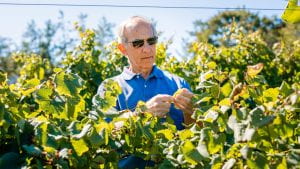
Cornell Chronicle/CALS News [2020-01-21]
Plant breeders are always striving to develop new varieties that satisfy growers, producers and consumers.
To do this, breeders use genetic markers to bring desirable traits from wild species into their cultivated cousins. Transferring those markers across species has been difficult at best, but a team of grapevine breeders, geneticists and bioinformatic specialists at Cornell AgriTech in Geneva, New York, has come up with a powerful new method.
Their research is detailed in “Haplotyping the Vitis Collinear Core Genome With rhAmpSeq Improves Marker Transferability in a Diverse Genus,” published Jan. 21 in Nature Communications.
The team’s new technique for developing genetic markers improves markers’ transfer rate across grapevine species by leaps and bounds – from 2% to 92%. With it, breeders worldwide can screen their collections and find out immediately which vines have the traits they want – regardless of what varieties they are, where they came from or which species their parents were.
“This new marker development strategy goes well beyond grapes,” said co-author Bruce Reisch, professor of horticulture in the College of Agriculture and Life Sciences, and leader of Cornell’s Grapevine Breeding and Genetics Program. “It’s applicable for breeding and genetic studies across different grape breeding programs, plant species and other diverse organisms.”


